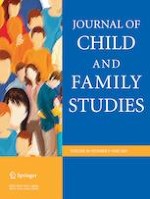26-03-2019 | Original Paper
When One Sibling has Autism: Adjustment and Sibling Relationship
Gepubliceerd in: Journal of Child and Family Studies | Uitgave 5/2019
Log in om toegang te krijgenAbstract
Objectives
The presence of autism spectrum disorder (ASD) in one sibling can impact typically developing (TD) siblings’ adjustment and quality of the sibling relationship. The present study examined the impact of sibling characteristics on both the sibling relationship and adjustment in TD siblings using self, parent, and clinician reports.
Methods
Fifty-two TD siblings and parents completed questionnaires about TD sibling adjustment and sibling relationship quality.
Results
Greater behavior difficulties in siblings with ASD related to poorer TD sibling adjustment and quality of the sibling relationship. A more positive TD sibling perception of the sibling relationship was associated with greater TD sibling coping and support.
Conclusions
Findings are discussed in terms of how these risk factors can inform interventions.
